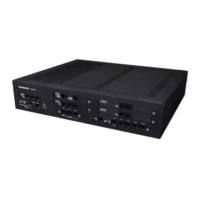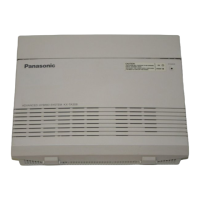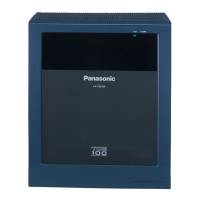This PBX supports the following types of operators:
Type Description
PBX operator An extension or ICD group can be assigned as a PBX operator for each
time mode (day/lunch/break/night).
Tenant operator An extension or incoming call distribution group can be assigned as a
tenant
operator. The tenant
operator may be the extension or ICD group
of another tenant.
[Example] Extension 110 in tenant 1 is the tenant operator of tenant 3.
Operator Call:
An extension user can call an operator by dialing the preprogrammed Operator Call feature number. The
destination of the Operator Call depends on the following:
– If the Tenant Service is not in use:
The call is directed to the PBX operator according to the corresponding time mode.
– If the Tenant Service is in use:
The
call
is
directed
to the extension’s tenant operator. If a tenant operator is not assigned, the call is directed
to the PBX operator. In this case, the current time mode of the extension’s tenant is used to determine the
PBX operator that the call is directed to.
If neither a tenant operator nor a PBX operator is assigned, the caller will hear a reorder tone.
Conditions
• An extension or ICD group can be assigned as both a tenant operator and the PBX operator.
• The same tenant operator can be assigned as the operator for multiple tenants.
PC Programming Manual References
4.4 [2-2] Operator & BGM—
PBX Operator—Day, Lunch, Break, Night
8.6 [6-6] Tenant— Operator (Extension Number)
PT Programming Manual References
[006] Operator Assignment
Feature Manual References
17.1.3 Tenant Service
21.1 Capacity of System Resources
Operating Manual References
1.2.1 Making Calls
Document Version 2013-05 Feature Manual 211
12.1.5 Operator Features

